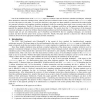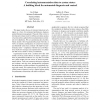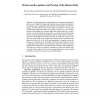1068 search results - page 139 / 214 » Extremely randomized trees |
HPCA
2005
IEEE
14 years 11 months ago
2005
IEEE
Due to the simulation time of the reference input set, architects often use alternative simulation techniques. Although these alternatives reduce the simulation time, what has not...
OSDI
2004
ACM
14 years 11 months ago
2004
ACM
This paper studies the use of statistical induction techniques as a basis for automated performance diagnosis and performance management. The goal of the work is to develop and ev...
FSTTCS
2009
Springer
14 years 5 months ago
2009
Springer
We describe a simple iterative method for proving a variety of results in combinatorial optimization. It is inspired by Jain’s iterative rounding method (FOCS 1998) for designing...
EMMCVPR
2007
Springer
14 years 5 months ago
2007
Springer
Recognizing humans, estimating their pose and segmenting their body parts are key to high-level image understanding. Because humans are highly articulated, the range of deformation...
FSTTCS
2007
Springer
14 years 5 months ago
2007
Springer
The Directed Maximum Leaf Out-Branching problem is to find an out-branching (i.e. a rooted oriented spanning tree) in a given digraph with the maximum number of leaves. In this pa...



